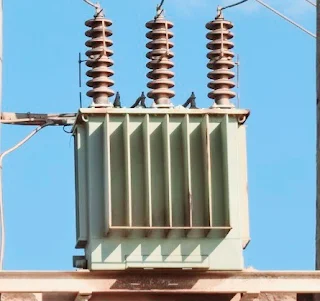How Distribution Transformers Work: An In-Depth Look
Distribution transformers are essential components in the electrical power distribution system. They play a crucial role in stepping down high voltage electricity from transmission lines to lower voltages suitable for use in homes, businesses, and industries. This article delves into the workings of distribution transformers, their types, components, and their significance in the electrical grid.
 |
| Distribution Transformer |
The Basics of Distribution Transformers
A distribution transformer is an electrical device that transfers electrical energy between two or more circuits through electromagnetic induction. It consists of primary and secondary windings wound around a magnetic core. A primary coil is connected to the high voltage supply, and the secondary winding is connected to the low voltage distribution lines. The transformer operates on the principle of mutual induction, where an alternating current (AC) in the primary winding creates a varying magnetic field that induces a voltage in the secondary winding.
Working Principle
The working principle of a distribution transformer is based on Faraday's Law of Electromagnetic Induction. When an AC voltage is applied to the primary winding, it creates a time-varying magnetic flux in the core. This changing flux induces a voltage in the secondary winding proportional to the turns ratio of the transformer. For example, if the primary winding has 1000 turns and the secondary winding has 100 turns, the turns ratio is 10:1, and the voltage in the secondary winding will be one-tenth of the primary voltage.
Components of a Distribution Transformer
A distribution transformer comprises several key components:
1. Core:
The core is typically made of laminated silicon steel to reduce energy losses due to eddy currents. The core provides a less reluctance path for the magnetic flux.
2. Windings:
The windings are made of copper or aluminum and are insulated to prevent short circuits. The primary winding is connected to the high voltage supply, and the secondary winding is connected to the load.
3. Insulation:
Insulating materials, such as oil or solid insulation, are used to insulate the windings and the core to prevent electrical breakdown.
4. Tank:
The transformer tank houses the core and windings and is filled with insulating oil that provides cooling and insulation.
5. Bushings:
Bushings are insulating structures that allow electrical connections to pass through the transformer tank without causing a short circuit.
6. Cooling System:
Distribution transformers are equipped with cooling systems, such as radiators or fans, to dissipate the heat generated during operation.
Types of Distribution Transformers
Distribution transformers can be classified based on their construction, phase, and insulation:
1. Pole-mounted Transformers:
These transformers are mounted on utility poles and are commonly used in rural and suburban areas. They are typically single-phase or three-phase units.
2. Pad-mounted Transformers:
These transformers are installed on concrete pads and are used in urban areas where underground distribution systems are prevalent. They are enclosed in tamper-proof housings for safety.
3. Dry-type Transformers:
These transformers use air as the insulating medium instead of oil. They are used in indoor applications where fire safety is a concern.
Significance in the Electrical Grid
Distribution transformers are crucial for the efficient operation of the electrical grid. They ensure that electricity is delivered at the appropriate voltage levels to end-users, minimizing energy losses during transmission. By stepping down high voltages to safer levels, distribution transformers enhance the safety and reliability of the power supply. Moreover, they help in maintaining voltage stability and reducing power outages, contributing to the overall efficiency and reliability of the electrical distribution system.
Conclusion
Their ability to step down high voltages to usable levels makes them essential for delivering electricity to homes, businesses, and industries. Understanding their working principle, components, and types helps in appreciating their role in ensuring a reliable and efficient power supply. As the demand for electricity continues to grow, the importance of distribution transformers in maintaining a stable and efficient electrical grid cannot be overstated.




.webp)
No comments:
Post a Comment